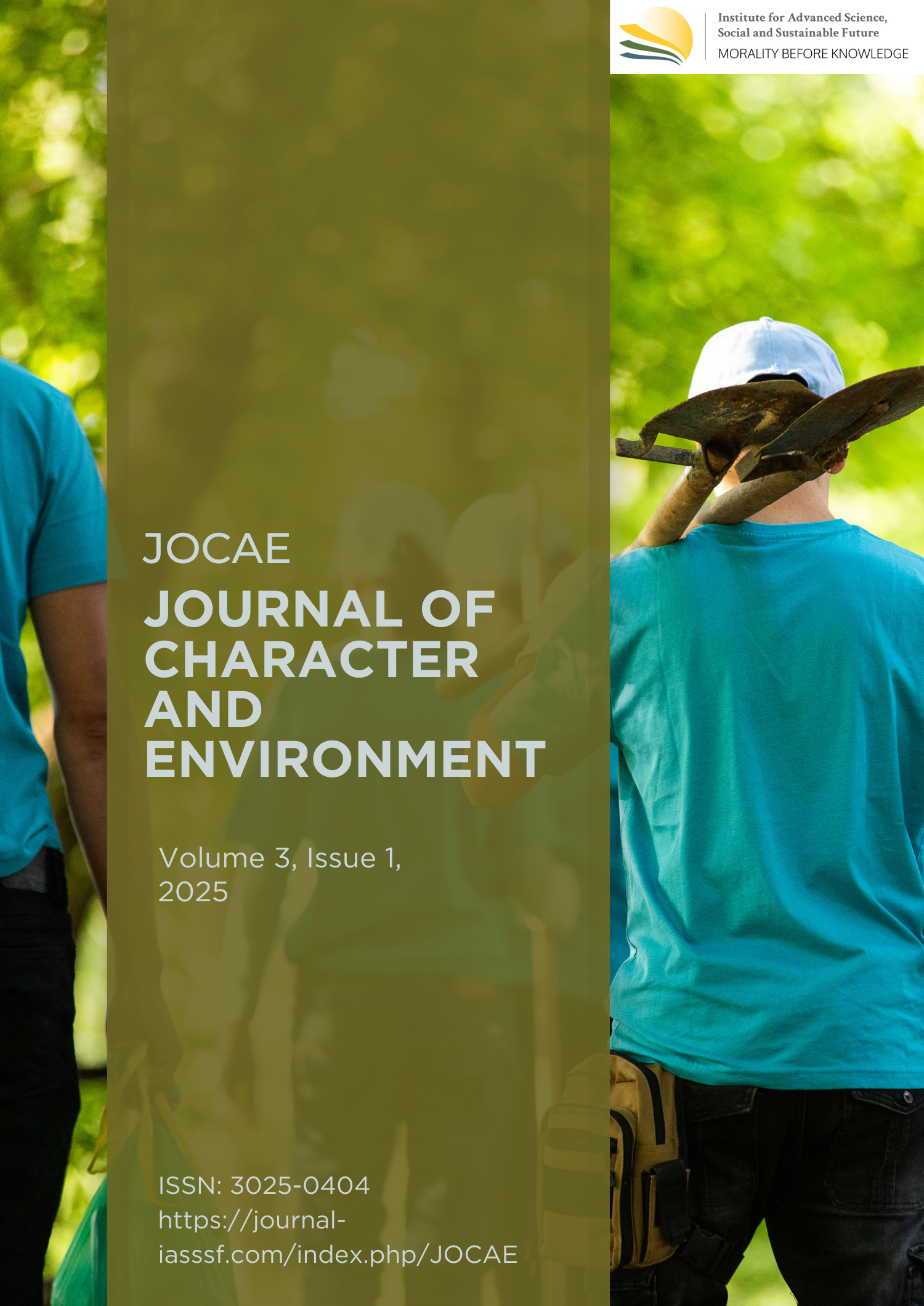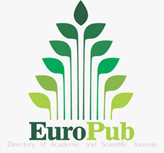The effect of the combination of volume and technique of administering nutrient solution on the growth and yield of large red chili plants (Capsicum annum L) baja F1 variety
DOI:
https://doi.org/10.61511/jocae.v3i1.2025.2088Keywords:
big red chili, nutrient solution, leavesAbstract
Background: In Indonesia itself, it is estimated that red chilies were brought by traders from Persia when they stopped in Aceh, including large red chilies, cayenne peppers, curly red chilies, and paprika. Factors that influence chili cultivation are less fertile soil conditions due to continuous use, this causes a decrease in soil quality which will affect the growth and production of chili plants and have an impact on reducing the growth and yield of chili production both in terms of quantity and quality, in addition to the use of quality seeds and superior varieties determine the increase in chili productivity. Methods: This research was conducted out from May 2022 to September 2022 in the experimental farm of the Faculty of Agriculture, Padjadjaran University, Jatinangor, Sumedang. With an altitude of about 700 meters above sea level (masl). The purpose of this research is to study the effect of volume combination and technique of nutrient solution administration on growth and yield of large red chilies (Capsicum annum L.) variety Baja F1. Providing nutrient solutions on time is intended to be according to the age of the plant, the right volume is intended to provide nutrient solutions with a certain volume that suits the needs of each plant, while right on target is intended to provide nutrient solutions in the root area or sprayed on the leaves, either fertilizing directly to the land or plant roots or spraying directly on the leaves (foliar feeding). The environmental design uses a simple pattern randomized block design (RAK) volume combination and technique of nutrient solution, with 6 experimental levels (A=volume 225 ml onto the field and without spraying onto the leaves, B=volume 300 ml onto the field and without spraying onto the leaves, C=volume 375 ml onto the field and without spraying onto the leaves, D=volume 200 ml onto the field and spraying onto the leaves, E=volume 300 ml onto the field and spraying onto the leaves and F=volume 375 ml onto the field and spraying onto the leaves), and repeated 4 times. Findings: The application of different combinations of nutrient solution volume and administration techniques significantly affected several growth parameters (such as plant height at 3 WAP, number of leaves at 1, 2, 4, and 5 WAP, and stem diameter at 4 and 5 WAP) as well as yield parameters (including number of chilies and total fruit weight). Conclusion: Among the treatments, the combination of applying 225 ml nutrient solution directly to the field along with foliar spraying produced the most optimal results in terms of both growth and yield of Baja F1 chili plants. Novelty/Originality of this article: This study provides novel insights into the integrated approach of combining precise nutrient volume and foliar feeding techniques, specifically identifying the synergistic effect of 225 ml root application and foliar spraying in enhancing growth and yield, which has not been thoroughly explored in previous chili cultivation studies.
References
Abu, N. S., Bukhari, W. M., Ong, C. H., Kassim, A. M., Izzuddin, T. A., Sukhaimie, M. N., ... & Rasid, A. F. A. (2022). Internet of things applications in precision agriculture: A review. Journal of Robotics and Control (JRC), 3(3), 338-347. https://doi.org/10.18196/jrc.v3i3.14159
Ahmed, N., Zhang, B., Chachar, Z., Li, J., Xiao, G., Wang, Q., ... & Tu, P. (2024). Micronutrients and their effects on horticultural crop quality, productivity and sustainability. Scientia Horticulturae, 323, 112512. https://doi.org/10.1016/j.scienta.2023.112512
Alshaal, T., & El-Ramady, H. (2017). Foliar application: From plant nutrition to biofortification. Environmental Biodiversity and Soil Security, 1, 71–83. https://doi.org/10.21608/jenvbs.2017.1089.1006
Anjum, N. A., Singh, H. P., Khan, M. I. R., Masood, A., Per, T. S., Negi, A., Batish, D. R., Khan, N. A., Duarte, A. C., Perra, E., & Ahmad, I. (2015). Too much is bad—An appraisal of phytotoxicity of elevated plant-beneficial heavy metal ions. Environmental Science and Pollution Research, 22(5), 3361–3382. https://doi.org/10.1007/s11356-014-3849-9
Baloch, Q. B., Chachar, Q. I., & Tareen, M. N. (2008). Effect of foliar application of macro and micro nutrients on production of green chilies (Capsicum annuum L.). Journal of Agricultural Technology, 4(2), 174–184. http://ijat-aatsea.com
Burkhardt, J., Basi, S., Pariyar, S., & Hunsche, M. (2012). Stomatal penetration by aqueous solutions—An update involving leaf surface particles. New Phytologist, 196(3), 774–787. https://doi.org/10.1111/j.1469-8137.2012.04307.x
De Bang, T. C., Husted, S., Laursen, K. H., Persson, D. P., & Schjoerring, J. K. (2021). The molecular–physiological functions of mineral macronutrients and their consequences for deficiency symptoms in plants. New Phytologist, 229(5), 2446–2469. https://doi.org/10.1111/nph.17074
Fageria, N. K., Filho, M. P. B., Moreira, A., & Guimarães, C. M. (2009). Foliar fertilization of crop plants. Journal of Plant Nutrition, 32(6), 1044–1064. https://doi.org/10.1080/01904160902872826
Fauziah, N. O., Fitriatin, B. N., Fakhrurroja, H., & Simarmata, T. (2024). Enhancing Soil Nutritional Status in Smart Farming: The Role of IoT‐Based Management for Meeting Plant Requirements. International Journal of Agronomy, 2024(1), 8874325. https://doi.org/10.1155/2024/8874325
Fernández, V., & Brown, P. H. (2013). From plant surface to plant metabolism: the uncertain fate of foliar-applied nutrients. Frontiers in plant science, 4, 289. https://doi.org/10.3389/fpls.2013.00289
Gokul, D., Poonkodi, P., & Angayarkanni, A. (2020). Effect of integrated nutrient management on the growth and nutrient content of chilli (Capsicum annuum L.). International Journal of Chemical Studies, 8(4), 2647-2651. https://doi.org/10.22271/chemi.2020.v8.i4ae.10040
Hatfield, J. L., & Prueger, J. H. (2015). Temperature extremes: Effect on plant growth and development. Weather and Climate Extremes, 10(Part A), 4–10. https://doi.org/10.1016/j.wace.2015.08.001
Ichwan, B., Suwignyo, R. A., Susilawati, S., Eliyanti, E., & Zulkarnain, Z. (2021). Foliar spray of water soluble fertilizer enhances drought tolerance of chili pepper. Analele Universităţii din Oradea, Fascicula Biologie, 28(1), 27–34. https://www.bioresearch.ro
Johnson, V. J., & Mirza, A. (2020). Role of macro and micronutrients in the growth and development of plants. International Journal of Current Microbiology and Applied Sciences, 9(11), 576–587. https://doi.org/10.20546/ijcmas.2020.911.071
Kannan, S. (2010). Foliar fertilization for sustainable crop production. In Genetic engineering, biofertilisation, soil quality and organic farming (pp. 371-402). Springer Netherlands. https://doi.org/10.1007/978-90-481-8741-6_13
Khatoon, H., Solanki, P., Narayan, M., Tewari, L., Rai, J. P. N., & Khatoon, C. H. (2017). Role of microbes in organic carbon decomposition and maintenance of soil ecosystem. International Journal of Chemical Studies, 5(6), 1648–1656. https://doi.org/10.21776/ub.ijcs.2017.005.06.150
Kusumiyati, K., Ahmad, F., Khan, M. R., Soleh, M. A., & Sundari, R. S. (2023). Productivity of cherry tomato cultivars as influenced by watering capacities and microclimate control designs. The Open Agriculture Journal, 17(1). http://dx.doi.org/10.2174/0118743315280566231119172531
Leghari, S. J., Wahocho, N. A., Laghari, G. M., Laghari, A. H., Bhabhan, G. M., Talpur, K. H., & Lashari, A. A. (2016). Role of nitrogen for plant growth and development: A review. Advances in Environmental Biology, 10(9), 209–219. https://doi.org/10.21776/ub.aeb.2016.10.9.11
Mahmudul H. B. M., Pipil, M. H., Alam, M. N., Nahar, S., Hasib, M., Ara, A. M., Moon, T. A., Ali, R., Karmokar, A. C., Hridita, T. K., & Ferdoush, J. (2025). Effects of micronutrients and their application efficiency on Capsicum production. International Journal of Biosciences, 27(1), 102–120. https://doi.org/10.12692/ijb/27.1.102-1200
Mockevičienė, I., Repsienė, R., Amalevičiūtė-Volungė, K., Karčauskienė, D., Šlepetienė, A., & Lepane, V. (2022). Effect of long-term application of organic fertilizers on improving organic matter quality in acid soil. Archives of Agronomy and Soil Science, 68(9), 1192–1204. https://doi.org/10.1080/03650340.2021.1875130
Nadeem, F., Hanif, M. A., Majeed, M. I., & Mushtaq, Z. (2018). Role of macronutrients and micronutrients in the growth and development of plants and prevention of deleterious plant diseases: A comprehensive review. International Journal of Chemical and Biochemical Sciences, 13, 31–52. https://www.cabidigitallibrary.org/doi/full/10.5555/20203071457
Nimona, F. H. (2020). Yield response and nutrient use efficiencies of hot pepper (Capsicum annuum L.) to inorganic fertilizers in Ethiopia: A review article. International Journal of Research in Agronomy, 3(1), 25–32. https://doi.org/10.33545/2618060X.2020.v3.i1a.27
Postolache, S., Sebastião, P., Viegas, V., Postolache, O., & Cercas, F. (2022). IoT-Based Systems for Soil Nutrients Assessment in Horticulture. Sensors, 23(1), 403. https://doi.org/10.3390/s23010403
Prakash, C., Singh, L. P., Gupta, A., & Lohan, S. K. (2023). Advancements in smart farming: A comprehensive review of IoT, wireless communication, sensors, and hardware for agricultural automation. Sensors and Actuators A: Physical, 362, 114605. https://doi.org/10.1016/j.sna.2023.114605
Purba, D. W., & Padhilah, F. (2021). Study of growth and production of red chili (Capsicum annuum L.) on giving AB mix fertilizer and different types of planting media with a wick system hydroponics. Agrium, 18(2), 120–128. https://doi.org/10.29103/agrium.v18i2.5339
Sánchez-Zamora, M. A., & Fernández-Escobar, R. (2002). The effect of foliar vs. soil application of urea to olive trees. Acta Horticulturae, 594, 675–678. https://doi.org/10.17660/ActaHortic.2002.594.91
Semenova, N. A., Burmistrov, D. E., Shumeyko, S. A., & Gudkov, S. V. (2024). Fertilizers based on nanoparticles as sources of macro- and microelements for plant crop growth: A review. Agronomy, 14(8), 1646. https://doi.org/10.3390/agronomy14081646
Singh, S., Singh, R., Singh, K., Katoch, K., Zaeen, A. A., Birhan, D. A., ... & Sahrma, L. K. (2024). Smart fertilizer technologies: An environmental impact assessment for sustainable agriculture. Smart Agricultural Technology, 8, 100504. https://doi.org/10.1016/j.atech.2024.100504
Tripathi, D. K., Singh, S., Singh, S., Mishra, S., Chauhan, D. K., & Dubey, N. K. (2015). Micronutrients and their diverse role in agricultural crops: Advances and future prospective. Acta Physiologiae Plantarum, 37(7), 139. https://doi.org/10.1007/s11738-015-1923-9
Uchida, R. (2000). Essential nutrients for plant growth: Nutrient functions and deficiency symptoms. College of Tropical Agriculture and Human Resources, University of Hawaii at Manoa. https://www.ctahr.hawaii.edu/oc/freepubs/
Downloads
Published
How to Cite
Issue
Section
Citation Check
License
Copyright (c) 2025 Tien Turmuktini, Elly Roosma Ria, Yolanda Dewi Azhari, Agus Surya Mulya, Tualar Simarmata, Betty Natalie Fitriatin, Nicky Oktav Fauziah, Yenny Muliani

This work is licensed under a Creative Commons Attribution 4.0 International License.
















